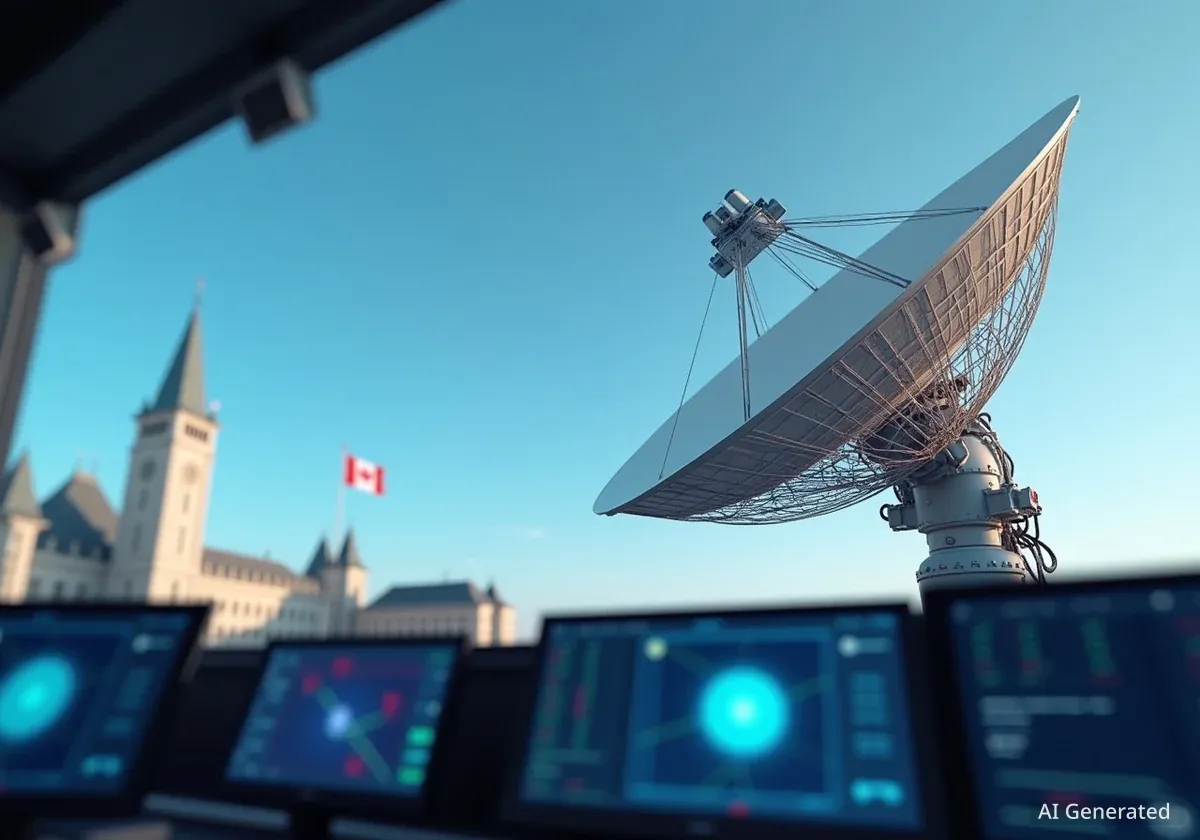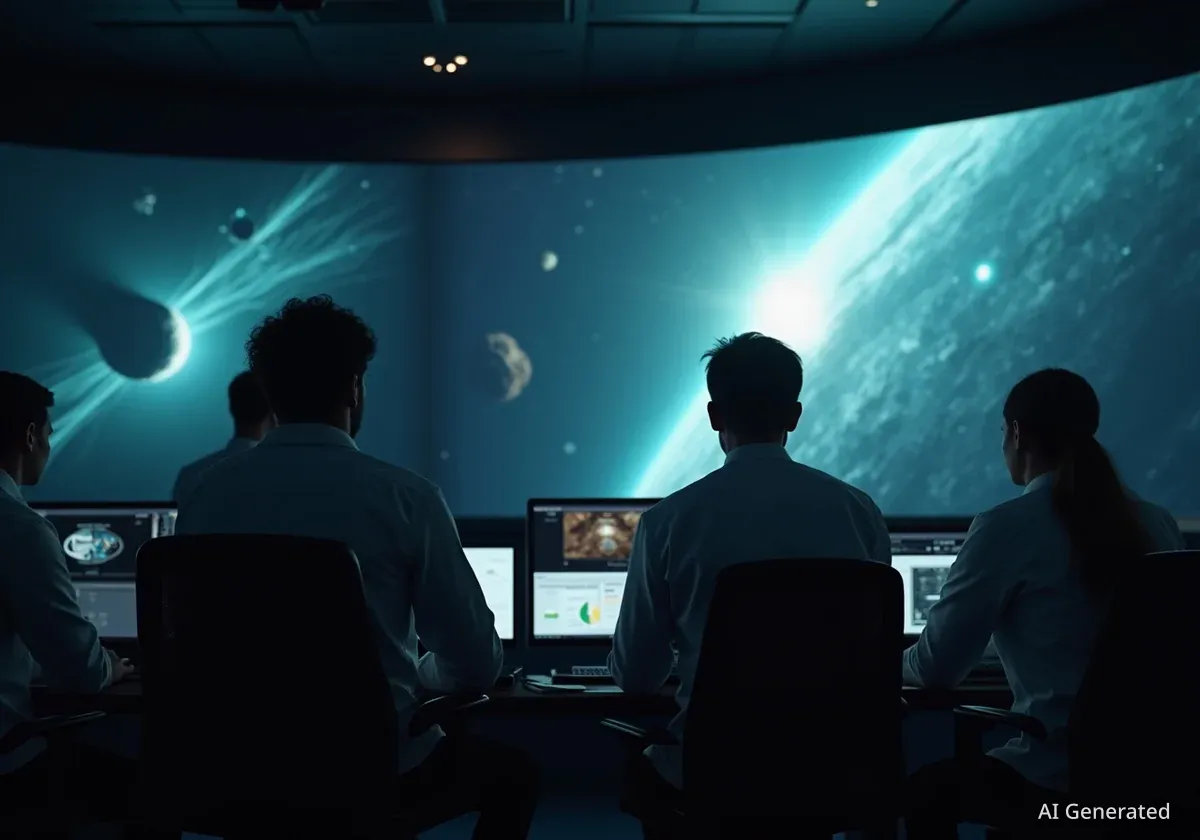Canada is allocating new funds for space technologies that serve both civilian and military purposes as part of a significant increase in national defense spending. Canadian Space Agency President Lisa Campbell confirmed the initiative at the International Astronautical Congress, highlighting a strategic focus on dual-use applications to enhance national security and economic growth.
Key Takeaways
- Canada's new defense strategy includes a C$9 billion boost to military spending.
- Over C$13 million is designated for 17 Canadian companies developing dual-use space technologies.
- An additional C$5 million will fund projects to expand the use of Earth observation satellite data.
- The strategy aims to address security challenges, reinforce sovereignty, and grow the national economy.
New National Defense Industrial Strategy
The Canadian government has unveiled a new defense industrial strategy designed to modernize its capabilities. Announced in June by Prime Minister Mark Carney and Minister of National Defence David McGuinty, the plan involves a substantial financial commitment.
The government will increase military spending by 9 billion Canadian dollars (approximately $6.5 billion USD) in the current fiscal year, which ends March 31. This funding increase is intended to equip Canada to handle emerging global security threats.
Speaking at the International Astronautical Congress in Sydney, Canadian Space Agency (CSA) President Lisa Campbell explained the space sector's role in this new strategy. She emphasized that investments in space are crucial for both national defense and civilian progress.
Funding for Dual-Use Space Technologies
A key component of the new strategy is direct investment in Canada's space industry. More than 13 million Canadian dollars will be awarded to 17 domestic companies. The funding targets the development of technologies with dual-use applications, meaning they can be used for both commercial and defense purposes.
What is Dual-Use Technology?
Dual-use technologies are systems or components developed for civilian or commercial use that can also be adapted for military applications. In the space sector, this often includes satellite communications, robotics, and Earth observation systems that can serve both scientific research and national security surveillance.
Lisa Campbell identified several key areas where the government sees potential for this dual-purpose development. She noted that in many of these fields, civilian and defense requirements naturally overlap.
"Satellite servicing, refueling, sustainable access to orbit, advanced robotics, artificial intelligence applications, critical deep space systems and cybersecurity have applications for defense but also on the civil side," Campbell stated.
The specific technologies receiving funding include:
- Satellite servicing and refueling
- Advanced robotics
- Artificial intelligence applications
- Cybersecurity systems
- Critical deep space systems
- Sustainable access to orbit
According to Campbell, this investment serves multiple national interests. "The investment is going to help ensure that Canada remains equipped to address emerging security challenges while reinforcing our sovereignty," she said. Campbell added that the funding will also stimulate economic activity by helping Canadian companies enter new markets.
Expanding Earth Observation Capabilities
Beyond the defense-focused funding, the Canadian Space Agency is independently investing in environmental monitoring. The agency has committed $5 million to projects that broaden the use of satellite imagery and data for environmental management.
Campbell detailed the goals of this initiative, stating that the projects will "address issues including declining species population, habitat degradation, deteriorating water quality and forest disturbance."
Space-based Earth observation is critical for monitoring Canada's vast and changing landscape, particularly its rapidly warming Arctic region and extensive forests prone to wildfires.
The practical applications of this data are extensive. Campbell explained that enhanced Earth observation strengthens Canada's ability to respond to natural disasters like wildfires and monitor the impacts of climate change. This includes observing extreme weather events and assessing biodiversity loss.
"[It] helps us monitor these changes, anticipate their impacts, but also empower communities to look after the land and also save money and save infrastructure," she remarked, highlighting the dual benefit of environmental protection and economic efficiency.
International Cooperation and Talent Recruitment
Alongside its domestic investments, Canada is actively strengthening its international space partnerships. Campbell noted that in a time of shifting global trade patterns, collaboration is more important than ever. She cited ongoing work with the European Space Agency (ESA) and the Japan Aerospace Exploration Agency (JAXA) as key examples.
A tangible result of this cooperation is scheduled for this fall. Canada's Canadarm2 robotic arm on the International Space Station is set to capture Japan's first HTV-X cargo resupply vehicle, demonstrating the practical outcomes of these international relationships.
Finally, Campbell made a direct appeal for skilled professionals to join Canada's growing space sector. Echoing a common theme at the global conference, she emphasized the need for human capital to drive innovation.
"Canada welcomes the best and brightest minds to help drive space science and technology research and development," Campbell concluded.
This push for talent, combined with strategic funding and international partnerships, forms the foundation of Canada's renewed vision for its role in space exploration and technology.





